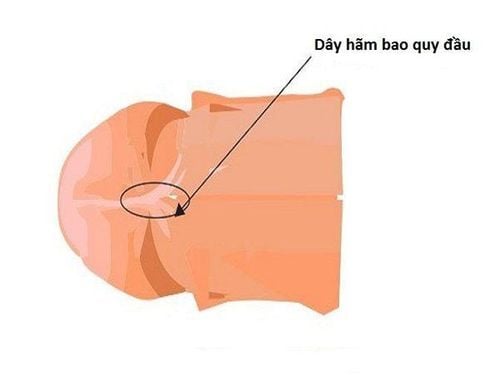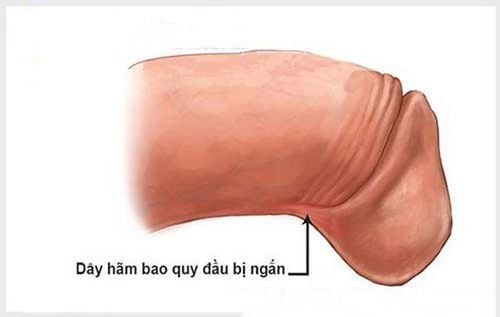The frenulum of the foreskin prevents the foreskin from sliding too far up the shaft of the penis. The frenulum can tear if it is overstretched. This condition is mostly seen in young people, during their first sexual experiences when they lack experience, or due to excessive masturbation.
1. What is a Torn Frenulum of the Foreskin?
The frenulum of the foreskin (foreskin ligament) is structured like an inverted Y on the underside of the glans. This is the part of the skin attached to the underside of the glans, near the urethral opening. The structure of this frenulum varies among individuals; some have a thin frenulum, while others have a thicker one. It is rich in sensory nerves and plays an important role in creating sexual pleasure for men during intercourse.
2. Causes of a Torn Frenulum
When the penis is erect, this piece of skin stretches. A torn frenulum occurs when the frenulum is torn due to the penis being too erect or subjected to strong impact (such as during sexual intercourse), causing bleeding and discomfort.
A torn frenulum can result from overstretching, which only happens when the penis is erect, during intercourse, or due to masturbation. Individuals with a short frenulum are more prone to tearing when the penis is erect.
If the mucosa is only slightly torn, it may cause minor bleeding and leave a small scar, making the individual uncomfortable during intercourse. Moreover, this injury can cause anxiety or reduced excitement in subsequent sexual encounters. If the tear is deep and involves the frenulum artery, the individual will lose a lot of blood and need to go to the hospital for suturing.

3. Effects of a Torn Frenulum
The frenulum of the foreskin is a site rich in sensory nerve endings that directly affect sensation and pleasure during male-female intercourse. Therefore, when this frenulum is unfortunately damaged or torn, it can lead to significant impacts on a man's sexual life and various other adverse effects.
A torn frenulum will cause the foreskin to bleed at the site, leading to pain for men. Additionally, men may experience phimosis or a torn foreskin. These issues affect sexual activity, causing pain and discomfort during intercourse with a partner.
If a torn frenulum is not properly treated, it may heal on its own but will leave an unsightly scar, making the frenulum shorter and more prone to tearing in future sexual encounters, causing significant inconvenience.
A torn frenulum that is not promptly treated can lead to deep ulcers in the foreskin, creating opportunities for pathogens to invade and cause infections, increasing the risk of male reproductive infections, especially balanitis, the inflammation of the foreskin and head of the penis.
This not only affects physiology but also negatively impacts the psychological state of men. Pain during intercourse can cause fear of sexual activity, psychological disorders, and anxiety about losing masculinity.
A torn frenulum significantly affects the health and daily life of men. Finally, men with a torn frenulum should proactively seek treatment at reputable specialized clinics to receive appropriate treatment advice.

To arrange an appointment, please call HOTLINE or make your reservation directly HERE. You may also download the MyVinmec app to schedule appointments faster and manage your reservations more conveniently.










